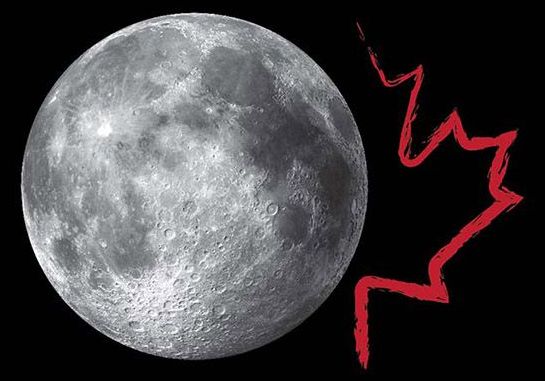In the Animal Olympics event of Surviving Horrible Things, tardigrades would take home the gold, silver, and the bronze. These eight-legged, microscopic creatures — also known as “water bears” —…
Filed under:


Bitcoin options’ daily trading volume has crossed the $1 billion mark for the first time, as bitcoin surges past $23, 000.
Crypto exchange Deribit leads the bitcoin options market, followed by Bit.com and OKEx, according to tracker Skew. Meanwhile, bitcoin is trading hands at around $23, 550 on Coinbase, according to TradingView.
Deribit CEO John Jansen told The Block that it is “quite a special day” as all metrics have hit new all-time high records for the exchange — total open interest, total turnover, and total options turnover.
A monster lurks at the heart of many galaxies – even our own Milky Way. This monster possesses the mass of millions or billions of Suns. Immense gravity shrouds it within a dark cocoon of space and time – a supermassive black hole. But while hidden in darkness and difficult to observe, black holes can also shine brighter than an entire galaxy. When feeding, these sleeping monsters awaken transforming into a quasar – one of the Universe’s most luminous objects. The energy a quasar radiates into space is so powerful, it can interfere with star formation for thousands of light years across their host galaxies. But one galaxy appears to be winning a struggle against its awoken blazing monster and in a recent paper published in the Astrophysical Journal, astronomers are trying to determine how this galaxy survives.

Summary: A new method identified a large set of gene regulatory regions in the brain, selected throughout human evolution.
Source: Swiss Institute of Bioinformatics.
With only 1% difference, the human and chimpanzee protein-coding genomes are remarkably similar. Understanding the biological features that make us human is part of a fascinating and intensely debated line of research. Researchers at the SIB Swiss Institute of Bioinformatics and the University of Lausanne have developed a new approach to pinpoint, for the first time, adaptive human-specific changes in the way genes are regulated in the brain.

University of Copenhagen researchers have advanced their quantum technology to such a degree that classical computing technology can no longer keep up. They have developed a chip that, with financial backing, could be scaled up and used to build the quantum simulator of the future. Their results are now published in Science Advances.
First came Google. Now, researchers at the University of Copenhagen’s Niels Bohr Institute in collaboration with University of Bochum have joined Google in the race to build the world’s first quantum computer with what they are calling a “major breakthrough.”
“We now possess the tool that makes it possible to build a quantum simulator that can outperform a classical computer. This is a major breakthrough and the first step into uncharted territory in the world of quantum physics,” asserts Professor Peter Lodahl, Director of the Center for Hybrid Quantum Networks (Hy-Q).

To date, only Americans have travelled to the Moon. On Artemis 2, that will change when the Canadian Space Agency sends one of its four astronauts on the first-ever crewed flight of NASA’s Orion capsule and the Space Launch System (SLS) rocket on a near two week test flight around the Moon.
The as yet un-assigned crewmember will become the first Canadian to travel to lunar orbit and will be one of up-to four crew on the scheduled 2023 Artemis 2 test flight — making Canada only the second nation to send one of its citizens to our closest neighbor.

Jack Steinberger, who shared the 1988 Nobel Prize in Physics for expanding understanding of the ghostly neutrino, a staggeringly ubiquitous subatomic particle, died on Saturday at his home in Geneva. He was 99.
His wife, Cynthia Alff, confirmed the death.
The ancient Greeks proposed that there was one invisible, indivisible unit of matter: the atom. But modern physics has found more than 100 smaller entities lurking within atoms, and observations of their dizzying interactions compose the Standard Model of what is now taken to be the order of the universe.


A startup with a new type of spacecraft propulsion system could make the interplanetary travel seen in Star Trek a reality. Magdrive has just closed a £1.4M seed round led by Founders Fund, an early investor in SpaceX, backed by Luminous Ventures, 7percent Ventures, and Entrepreneur First.
Magdrive is developing a next generation of spacecraft propulsion for small satellites. The startup says its engine’s thrust and efficiency are a “generational leap” ahead of any other electrical thrusters, opening up the space industry to completely new types of missions that were not possible before, without resorting to much larger, expensive and heavier chemical thrusters. It says its engine would make fast and affordable interplanetary space travel possible, as well as operations in Very Low Earth orbit. The engine would also make orbital manufacturing far more possible than previously.
Existing electrical solutions are very efficient but have very low thrust. Chemical thrusters have high thrust but lack efficiency and are hazardous and expensive to handle. Magdrive says its engine can deliver both high thrust and high efficiency in one system.

As the U.S. government works to contain a sprawling hacking campaign that relies on software in technology from SolarWinds, a federal contractor, technology firms are disabling some of the hackers’ key infrastructure.
Cybersecurity giant FireEye on Wednesday said that it had worked with Microsoft and the domain registrar GoDaddy to take over one of the domains that attackers had used to send malicious code to victim machines. The move is no panacea for stopping the suspected state-sponsored hacking campaign, though it could help stem the tide of victims, which reportedly includes the departments of Treasury and Homeland Security.
The seized domain, known as a “killswitch,” will “affect new and previous” infections of the malicious code coming from that particular domain, FireEye said in a statement that was first reported by independent journalist Brian Krebs. “Depending on the IP address returned when the malware resolves avsvmcloud[.]com, under certain conditions, the malware would terminate itself and prevent further execution.”